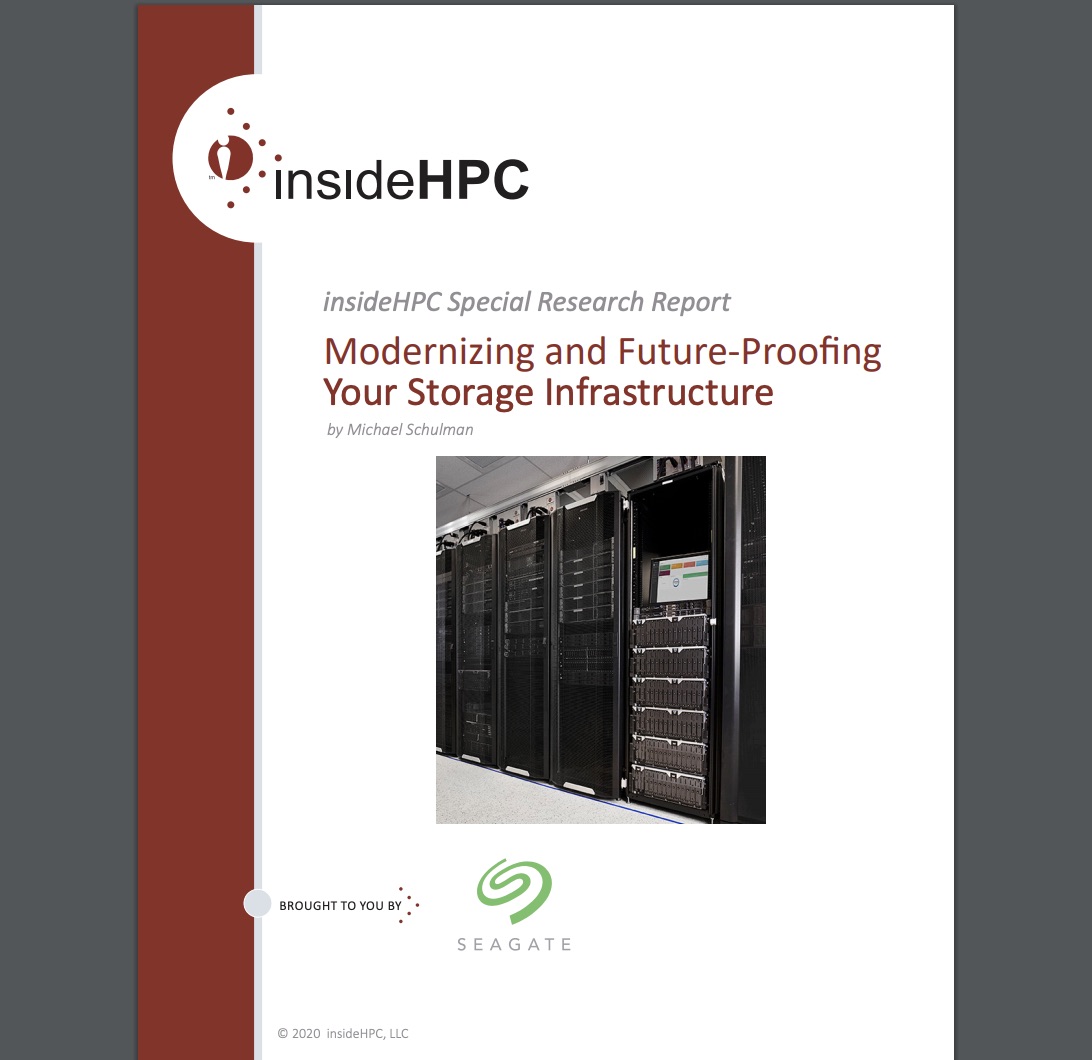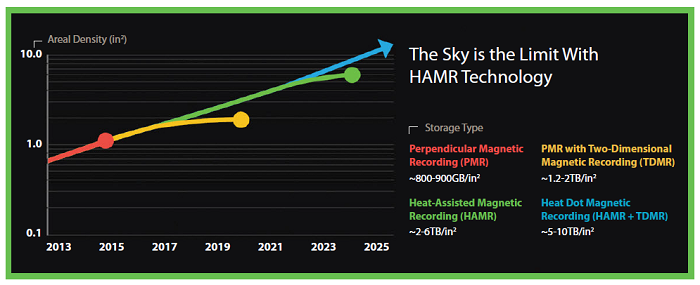 Data—the gold that today’s organizations spend significant resources to acquire—is ever-growing and underpins significant innovation in technologies for storing and accessing it. In this technology guide, Modernizing and Future-Proofing Your Storage Infrastructure, we’ll show why different applications and workflows will always have data storage and access requirements, making it critical for planning to understand that a heterogeneous storage infrastructure is needed for a fully functioning organization. Most organizations require both High Performance Computing (HPC) technologies as well as other IT functionalities.
Data—the gold that today’s organizations spend significant resources to acquire—is ever-growing and underpins significant innovation in technologies for storing and accessing it. In this technology guide, Modernizing and Future-Proofing Your Storage Infrastructure, we’ll show why different applications and workflows will always have data storage and access requirements, making it critical for planning to understand that a heterogeneous storage infrastructure is needed for a fully functioning organization. Most organizations require both High Performance Computing (HPC) technologies as well as other IT functionalities.
Value
Reliability for all data-center components is critical for a modern and efficient IT team. As data explodes a storage system must be able to handle the I/O pressure that is put on the underlying hardware. By using a single company to supply all of the hardware, reliability is increased as the components are designed and tested as one unit. And, by partnering with a supplier that integrates the various hardware subsystems, you get more than just a sum of the parts. With both CPUs and massive amounts of storage in the same box, a modern infrastructure can be created, without the major concern for future growth or compatibility.
The creation of a data center is an expensive undertaking. One of the main concerns is the density of the CPU systems as well as the storage systems. Higher density means that more performance (CPUs) or more capacity (storage) is available per square foot of real estate. Thus, using very high-density storage housed per rack results in a savings compared to less-dense storage devices.
As new technologies are developed, a critical concern for many IT executives is whether they can integrate the new and needed products into their existing infrastructure. By designing an overall software architecture that uses a variety of technologies that can both scale and be modernized, future-proofing for applications can be engineered now.
New storage technologies are always being developed that result in higher capacities and/or faster response times. Today, a hierarchy of storage profiles is available and should be matched to the applications requirements. Each technology will have specific profiles, which should be understood by the organization acquiring them. For example:
HDDs
• Very large capacity
• Low cost
• Long life
SDDs
• Fast random access
• Low latency
• Excellent IOps/Watt
• Very durable
HPC applications typically know what data is “hot” and must be accessed frequently and what data may be stored on a slower device. By having both SSDs and HDDs in the same enclosure and equally accessible to the application, a more optimized overall solution can be implemented.
Compute servers that are used in HPC systems will typically have two sockets and possibly four. This translates to over 120 cores available for the computation. However, the amount of storage in a typical compute server is usually limited. When architecting an HPC solution, putting high-end CPUs in the same enclosure as the storage devices would eliminate integration issues and position the compute and storage close together, both physically and on the same internal bus. Applications will run faster when the application is accessing storage in the same system, compared to having to go outside of the box.
This not only reduces the footprint needed, but will be more reliable as external networking is not required. Everything for this setup is supplied by the same vendor. Applications can expand the amount of data that is available for fast (in-box) access, whether touching the SSDs or HDDs. The more components that make up an overall system, the more chance that a failure will occur. Therefore, it is best to keep the number of separate components low to avoid the chance of a failure.
The amount of power required for an HPC installation is significant, as the number of servers for HPC is typically high. With innovative CPU and storage solutions starting at the component level, the power required can add up. By bundling CPUs and large amounts of storage in a single enclosure, less power is used, which can really add up as the number of systems is increased to meet the anticipated demand.
Incorporating CPUs and a large number of storage devices in the same system also reduces cabling. This is important because more cables in a system increases the possibility of failure, as cables can detach, and finding a detached cable can be difficult and time-consuming. Cables, especially high-speed optical cables, also add cost. So, using fewer cables whenever possible improves the reliability of a storage cluster and can decrease its cost. New systems that contain both CPUs and storage can greatly reduce the number of cables or even eliminate some types of cables.
Seagate as a Trusted Partner
Seagate is a world leader in the design and supplier of storage devices. With over 40 years of experience supplying both HDDs and SSDs to a wide range of organizations, Seagate partners with you for your most demanding applications. Seagate has developed expertise in a wide range of industries, especially in the HPC domain, where demands on the storage system are high.
Although choosing your storage system as part of a larger HPC environment can be complex, Seagate makes it easy. With experts available to architect your system to combine compute and storage into one box, performance and reliability are increased and a more optimized and tailored solution can be implemented. Only one support call is necessary should an issue arise. There is no need to determine which vendor to call in case of an issue. Seagate is there to help.
However, Seagate cannot do it alone. Seagate works with a large ecosystem of partners—both resellers and software partners—to deliver solutions tailored to your needs. Parallel file system software can be layered on top of the base storage system as well as additional security software.
With a full line of storage devices available, Seagate meets any performance or price targets. As a leader in enterprise storage, Seagate delivers high-density storage devices as well as the packaging to fit many TBs into a single enclosure. With a unique product, the Exos AP 4U100, you can store up to 1.6 petabytes along with two Intel Xeon CPUs in a single 4U system. All Seagate products are precision-engineered in order to deliver the highest quality and most performant systems available.

Below is a simple list of the benefits of the Exos AP 4U100 compared with traditional low-capacity severs.
The Exos AP 4U100 helps you to:
Reduce data center footprint
Very high-density storage enclosures reduce the square footage used in the data center by the storage system.
Reduced cooling demand
Embedding servers in the storage enclosures reduces the total power consumption and therefore total cooling.
Increased confidence
When delivered by a single vendor, the components are integrated and tested together so that you become more productive, faster.
Investment protection
The Exos AP 4U100 is designed to work with higher density drives as technology evolves.
Simpler HPC infrastructure
Combine your compute and storage requirements in a single product, integrated by Seagate.
Accelerate application performance
Determine the best mix of SSDs and HDDs for your use case.
Improve workflows
Use the same storage system for multiple organizational requirements as shown in the figure above.
Next Steps
Modernize your HPC infrastructure with the Seagate Expos AP 4U100 system. Check out a 3D model here.
Contact Seagate at www.seagate.com
World Wide Technology (WWT) is a leading technology provider with extensive expertise in the HPC domain. They use a proven and innovative approach to help their customers discover, evaluate, architect and implement advanced technology lab testing in their Advanced Technology Center and deploy their solutions rapidly through our global integration centers. Contact wwt.com
Over the past few weeks we explored these topics surrounding storage infrastructure:
- Introduction, Mixing Workloads, Components/Storage
- Challenges with HPC Today and How it is Changing, Industry Trends
- Industry Innovators, Storage Considerations
- Value, Seagate as a Trusted Partner, Next Steps
Download the complete insideHPC Special Research Report: Modernizing and Future-Proofing Your Storage Infrastructure, courtesy of Seagate.




